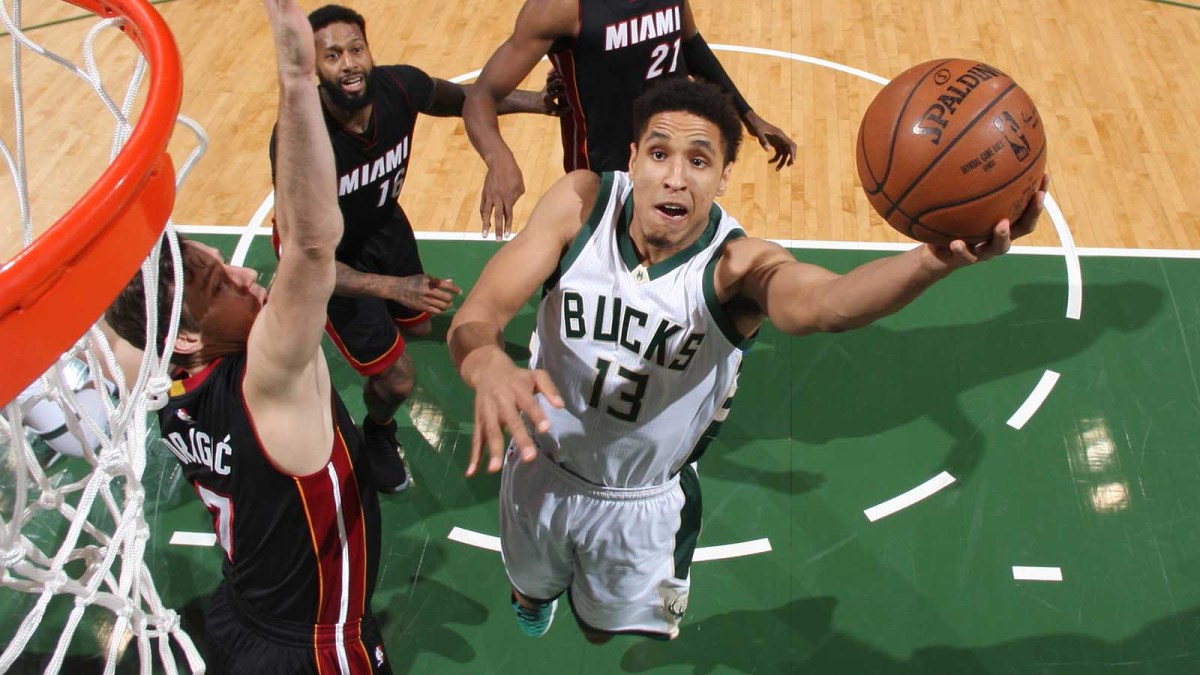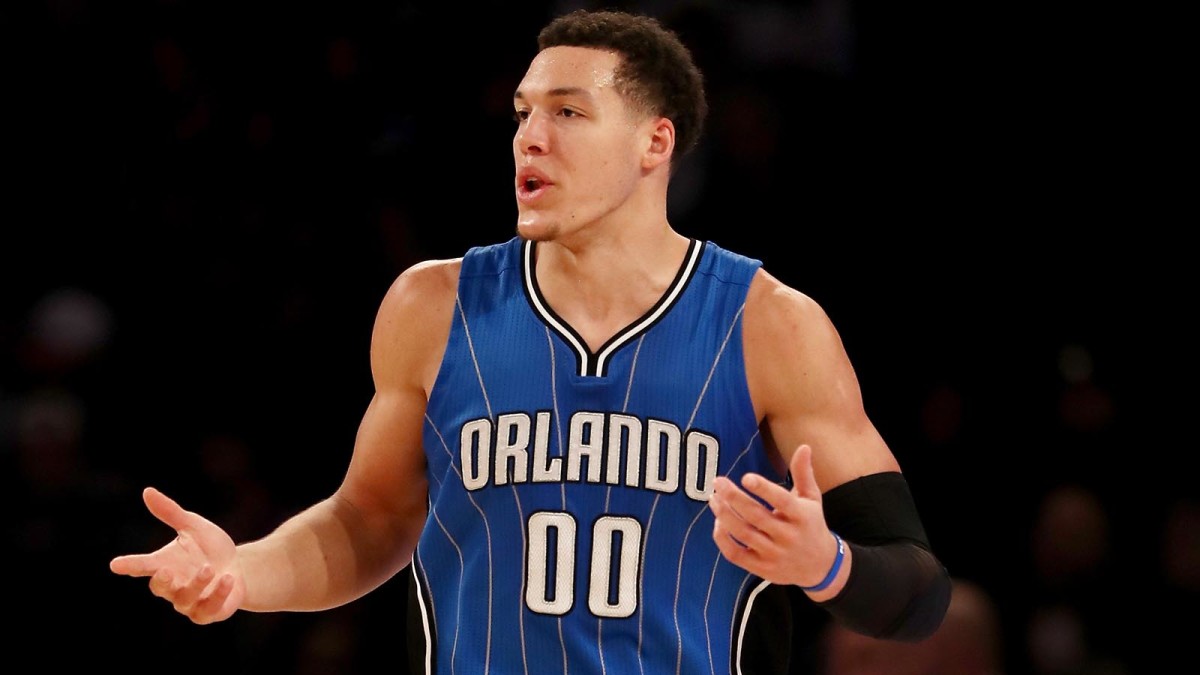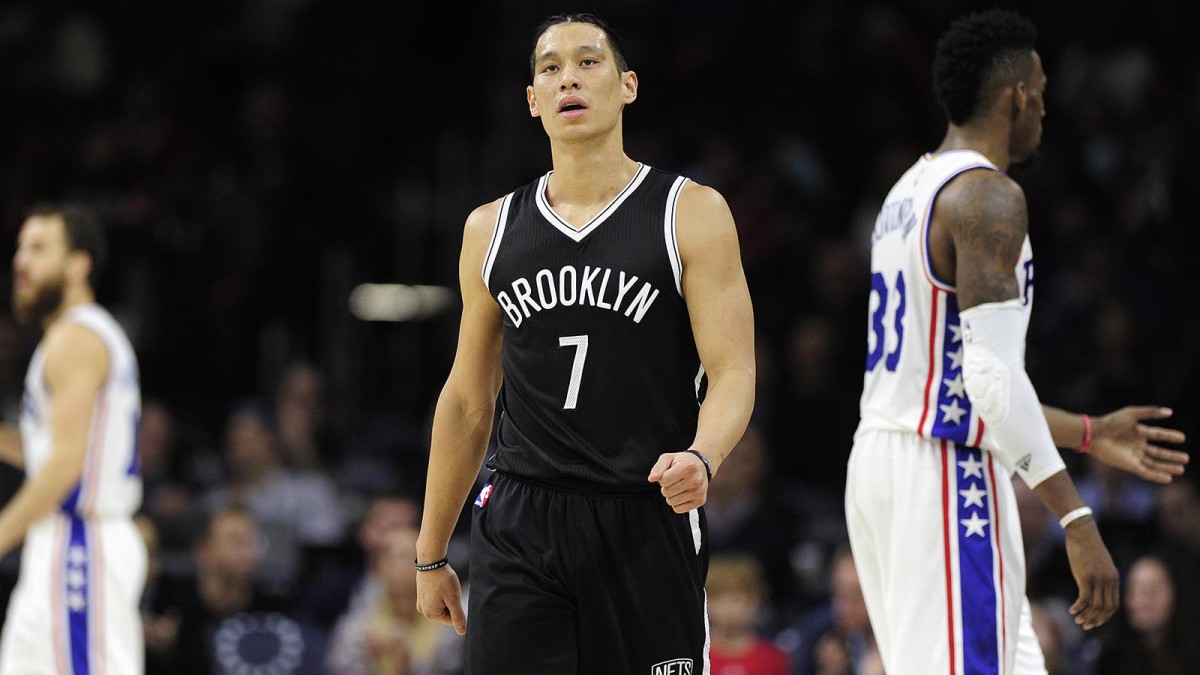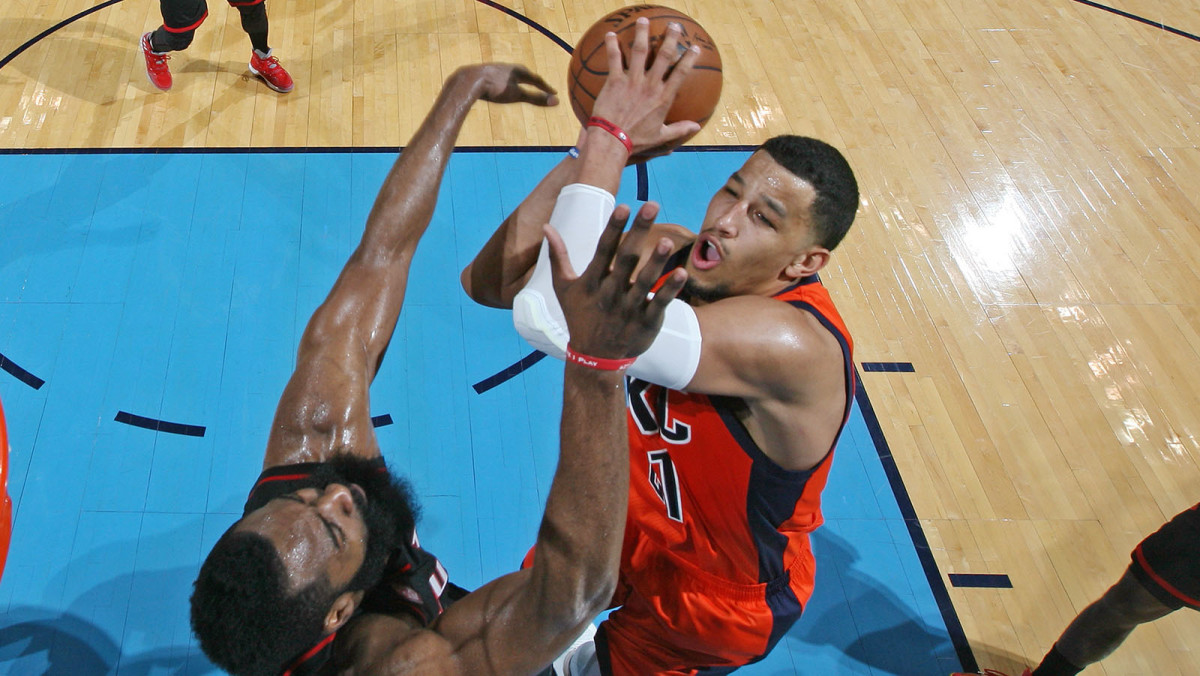Top 100 NBA Players of 2018: Biggest Snubs

Creating a defined list inevitably leads to snubs, the likes of which run deep with our ranking of Top 100 NBA Players of 2018.
In some sense, stopping at 100 is an arbitrary end point. There isn't a dramatic difference between our final pick and those players who narrowly missed the cut, and one could make a compelling case for many of those omitted to claim one of the last spots. Beyond that, there are handfuls of relevant players who are well regarded but noticeably absent, unseated by the sheer number of qualified candidates. The list below is a combination of those two groups—a collection of 25 notable omissions, though not squarely a queue of those players next in line. In alphabetical order:

Malcolm Brogdon, Bucks
Brogdon came into the league as a rookie only in name. Rarely are first-year guards so in touch with their limitations, and even more rarely are they legitimately helpful defenders. Brogdon was simply ahead of the curve. The 24-year-old came into the league with four years of college experience and played accordingly, making meaningful contributions for a competitive playoff team. These are strong starting credentials (as is Rookie of the Year, which he won in June). It helps, too, that there are enough playmaking wings and bigs in the league that a more conservative creator like Brogdon will often make sense. Not every point guard has to be a pick-and-roll dynamo. Sometimes it serves a team best for a point to probe through the options, move the ball, and contribute when it comes back to him. — RM
DeMarre Carroll, Nets
Carroll’s disappointing two-year tenure in Toronto mercifully came to an end this summer following a putrid postseason in which he delivered empty minutes and eventually lost his starting spot. Hyped as a complementary Swiss Army knife when he arrived as a high-priced free agent in 2015, the 31-year-old forward never recovered to his peak level of production following a major knee injury in 2015-16. After thriving in the Hawks’ motion-heavy offense, Carroll (8.9 PPG, 3.8 RPG) struggled to find a productive fit alongside his Raptors’ star teammates, whom he knocked for their overreliance on isolation play on his way out the door. While he may find the Nets’ style more to his liking following a summer trade, Carroll’s lack of scoring will limit his ability to effectively play a leading role on a young and talent-deficient roster. — BG
Top 100 NBA Players of 2018: Explaining the Process
Seth Curry, Mavericks
Stephen Curry created tidal shifts in the way that NBA teams defend, and his brother, Seth, is riding the wave. All either Curry brother needs is a high screen to force some in-over-his-head center to wade out beyond the three-point line. If they don’t, Seth—who shot 44.4% on pull-up three-pointers last season—can be almost as punishing as Steph. And if they do, Seth can scamper inside the arc for an array of step-backs and runners. Seth’s game doesn’t pick up much speed as he works downhill, but what he lacks in momentum he makes up for in savvy and shot-making. At worst, Curry can be the looming threat in the weakside corner that opponents are loathe to leave. Give him some room to work, however, and he can freelance his way into bursts of scoring out of even the most simple situations. — RM
Evan Fournier, Magic
Fournier gets buckets. Most of them stem from his fluid jumper, which is perfectly accessible—if not yet consistent—off the dribble. Others are the product of arrhythmic drives that grind to a halt as Fournier seals his man behind him before exploding through some unexpected space. Fournier has all the little tricks and skills necessary to put up 17.2 points per game. But what else? Marginal playmaking ability aside, Fournier hasn’t shown much to round out his knack for scoring. Time is still on Fournier’s side (he’ll be 25 years old by the start of the season), but for the moment there are better scoring specialists out there and many more complete wings. — RM
Manu Ginobili, Spurs
We’re lucky to get one more season from Ginobili, who was better at 39 years old than a guard has any right to be. Age is a different matter for bigs. A seven-footer is still a seven-footer no matter his aches. No one can take away his size or his reach around the rim. Ginobili, on the other hand, is slower than ever and subject to careful restrictions on his playing time. The haste of his game has changed but the urgency has not; one can still expect to find Ginobili in the thick of it whenever there’s a high-leverage loose ball to be collected, or on top of things whenever there’s a crucial play in the works. Manu is still Manu. Teams scour the globe every year in the hopes of finding a player of comparable fire. Roundly, they fail. — RM
Rudy Gay, Spurs
Long a player whose raw statistical averages outpaced his impact numbers, Gay (18.7 PPG, 6.3 RPG, 2.8 APG) actually boasted a team-best +1.7 net rating for the Kings before suffering a season-ending Achilles tear just 30 games into last season. Seeking greener pastures and trusting that his reliable scoring would draw interest, Gay turned down a $14.2 million option this summer, only to settle for a relatively modest two-year, $17 million deal with the Spurs. In San Antonio, the 31-year-old forward should enjoy plenty of time to fully rehabilitate before sliding into a reduced role as a tertiary offensive threat. Gay’s eagerness to create and take shots will be a welcome addition to an attack that leaned heavily on Kawhi Leonard and an aging frontcourt. While his career-altering injury may prevent him from ever carrying an offense like he did for the Grizzlies, Raptors and Kings, Gay can now shift his focus to building out his remarkably thin postseason résumé. — BG

Aaron Gordon, Magic
In his third year with Orlando, Gordon (12.7 PPG, 5.1 RPG, 1.9 APG) locked down a full-time starting gig but didn’t quite deliver a true breakout campaign. A freakishly athletic 21-year-old forward who famously (but unsuccessfully) unveiled the “Drone Dunk” at All-Star Weekend in New Orleans, Gordon was often pushed out to the wing by the Magic’s frontcourt logjam. While he has the tools to effectively defend multiple positions, Gordon is a much more natural offensive fit at the four due to his limited ball skills and lack of three-point shooting range. To no one’s great surprise, his numbers improved substantially following the midseason trade of power forward Serge Ibaka. Despite his bounciness and boundless energy, Gordon hasn’t yet consistently impacted games like a top-five pick should. He enters next season still needing to prove that he’s capable of being more than a glorified hustle guy. — BG
JaMychal Green, Free Agent (Grizzlies)
Green does not intrude. He seems largely content to fill in the gaps presented to him, whether by knocking down an open jumper, working into position for a rebound, or screening to trigger a play before clearing out. What makes his game is how smoothly it blends. There really aren’t any teams for which his approach would be an awkward fit; all styles and constructions could find use for a low-maintenance big with a fairly adjustable game. That nothing in Green’s skill set is particularly exceptional doesn’t take away from the fact that he’s good for 12 points and nine rebounds per 36 minutes backboned by solid defense. If he can minimize those nights when his physicality and frustration get the better of him, Green might bolster his case for next season. — RM
Tim Hardaway Jr., Knicks
Timing is often everything in the NBA; look no further than Hardaway (14.5 PPG, 2.8 RPG, 2.3 APG) for proof. After slogging three forgettable seasons and getting traded halfway through his rookie deal, the 25-year-old shooting guard delivered a career year across the board for Atlanta in 2016-17. Hardaway shifted between starting and super-sub roles, providing streaky scoring and decent outside shooting to a lagging Hawks offense that desperately needed it. His reward? A four-year, 71 million contract to return to New York, where he pencils in as a starter and major source of offense. Despite his progress, Hardaway’s game still has plenty of holes: he doesn’t get to the line regularly enough for a primary option, he needs further development as a playmaker for others, and he might as well be a ghost on defense. During his four-year career, he’s averaged one steal per every 47 minutes played and one block per every 153 minutes (!) played. Remarkably, Lou Williams, Raymond Felton and the 39-year-old Jason Terry each blocked more shots than the 6’6” Hardaway last season. — BG
Joe Ingles, Jazz
Ingles is, at times, almost comically uninterested in scoring. Many of his touches come and go without so much as a glance at the rim. This can be a limitation in a league where projecting as a threat is so crucial to team operations, but Ingles makes up for it by working every other angle. His playmaking is as capable as it is eager; Ingles is in his natural state when moving some teammate toward a basket of their own, whether through a pick-and-roll or a simple hit-ahead pass. At the same time, the postseason showed that the 29-year-old Ingles—through slow feet and all—is persistent and cagey enough on defense to help mitigate certain key matchups. An unathletic, low-scoring wing with a trebuchet shot release will always be a bit of an oddity in the NBA. Ingles has found a perfect lane, however, to translate his quirks to winning basketball. — RM
Joe Johnson, Jazz
If every shot were a big shot, Johnson might never miss. To watch him in those situations is to see a mastery of the moment. Everyone on the floor knows the weapons on which Johnson relies, and yet there’s only so much that can be done to take them away. Johnson is unflappable. Unrushable. He’s strong enough that a bump or push-off puts a chasm between him and his defender. He’s tall enough that a defender has to reach for his shot, leaving them vulnerable to his stop-and-go ploys. There’s still plenty for Johnson to do as he works between those clutch moments: create, facilitate, spot-up, and help contain forwards of all kinds. Unfortunately, his production is slightly leaner—making his all-around game a touch more situational—every passing year. — RM
Enes Kanter, Thunder
Thunder head coach Billy Donovan—in a moment of uncommon coaching candor—confessed to the central tension of Kanter’s career during a mid-game comment to assistant coach Maurice Cheeks. “Can’t play Kanter,” Donovan appeared to say, after watching Kanter botch his defense of a pick-and-roll during OKC's first-round playoff series. Kanter’s offensive skill is unquestionable. Few bigs in the league today can match his move set around the basket, much less his touch. Only Andre Drummond and Dwight Howard, too, grabbed a greater percentage of available offensive rebounds. And so it speaks volumes that in spite of all this, the coaches who know Kanter best limit him to just over 20 minutes a game and pull him almost entirely from a growing list of problematic matchups. Kanter presents a matchup problem in nearly every game he plays in. The question is for whom. — RM
Michael Kidd-Gilchrist, Hornets
The good news: Kidd-Gilchrist (9.2 PPG, 7 RPG, 1.4 APG) made it through an entire season unscathed following three consecutive injury-plagued campaigns. The bad news: total non-shooters like Charlotte’s former No. 2 pick are finding it more and more difficult to deliver value in the modern NBA. An excellent rebounder and versatile defender, Kidd-Gilchrist’s broken shot and confidence stick out like a sore thumb, even when compared to other non-shooting defensive specialists. Last season, the 23-year-old Kidd-Gilchrist made just one three-pointer in 2,349 minutes—an abysmal rate befitting a plodding 7-footer rather than an agile and energetic small forward. That complete lack of faith on the perimeter coupled with a shaky mid-range jumper make it difficult to construct effective offensive lineups, even when he shifts up to the four. — BG

Jeremy Lin, Nets
While slightly miscast (though not altogether unqualified) as a starter for the Nets, Lin added to an already sturdy body of work last season. The book is out on Lin. Teams know when to make him shoot and how to apply pressure—areas of Lin’s game where he is prone to mistakes. Still he dashes his way through pick-and-rolls, first putting a defender on their heels and then pushing past them. There is always a use for a creator of Lin’s talents. Better balanced teams than Brooklyn have shown that even moderate spacing can give Lin critical breathing room on his drives to the basket. And every year he learns more about what makes him effective and how to best leverage it. Lin has never been more productive on a per-minute basis than he was in the 36 games he played for the Nets last season—his supernova stint with the Knicks included. This could be a big year for Lin’s future Top 100 candidacy. — RM
Jabari Parker, Bucks
Will Parker ever get the chance to develop into the type of star that many thought he would be? It’s a heartbreaking but fair question, given that the 2014 No. 2 pick has now suffered two season-ending knee injuries during his three years in Milwaukee. There were clear signs of progress for Parker (20.1 PPG, 6.2 RPG, 2.8 APG) before his most recent injury: He attacked defenses with greater force, he shot more regularly and more confidently from deep, and he even emerged as a secondary playmaker for others. While his defensive impact continued to lag, the 22-year-old Parker was rounding into the all-around inside-outside scoring threat that made him a highly-touted high school prospect and drew comparisons to Carmelo Anthony and Paul Pierce. But instead of cashing in with a max extension this summer or claiming a spot next to Giannis Antetokounmpo at the 2018 All-Star Game, Parker is now mired in another extended rehabilitation effort that is expected to cost him a good chunk of the 2017-18 season. — BG
Tony Parker, Spurs
While inevitable, Parker’s post-30 decline has been sharper and sadder than expected. In the four years since he finished sixth in the 2013 MVP voting, the Spurs’ longtime starting point guard and future Hall of Famer has seen his scoring and efficiency numbers steadily drop. Last season, the 35-year-old Parker (10.1 PPG, 4.6 APG) posted his worst numbers since his age-19 rookie year, while missing nearly 20 games and sustaining a season-ending leg injury during the playoffs that is expected to keep him off the court to start 2017-18. Sometimes the baton gets passed gracefully; other times it gets ripped from one’s grasp. — BG
Mason Plumlee, Free Agent (Nuggets)
An advanced-stats darling thanks to his catch-and-finish scoring, productive rebounding and unusual-for-a-big passing ability, Plumlee (10.4 PPG, 7.5 RPG, 3.5 APG) saw his earning power undercut by a midseason trade from Portland to Denver. Rather than potentially returning to the playoffs and cashing in as a projected long-term starter this summer, the 27-year-old center found himself backing up the Nuggets’ big man of the future, Nikola Jokic, for a lottery team as the center market tightened considerably. Although he’s comfortable running the floor and moving around the perimeter to set screens and target cutters from the high post, Plumlee is held back by his nonexistent shooting range and less-than-imposing defensive presence. Both Portland and Denver played better defense when Plumlee went to the bench, in part due to his longstanding issues with awareness and positioning. — BG
Zach Randolph, Kings
There is something deeply admirable—and apparently prosecutable—about the blunt force of Randolph’s game, which is as rooted in bumps and crashes as ever. Unfortunately, it just doesn’t translate as it used to; the fact that Randolph barely gets to the free throw line and doesn’t quite have three-point range makes him one of the lowest-efficiency scorers in the league. In the true-shooting arms race of the modern NBA, what you see with Randolph’s modest percentages (44.9% from the field) is what you get. That offering still has its place considering that the majority of Randolph’s offense comes unassisted—a point of particular relevance when Z-Bo comes off the bench, as he did for Memphis last season—though its value is wavering. — RM

Andre Roberson, Thunder
It’s borderline impossible for a wing to start and play big minutes for a West playoff team while shooting 25% from deep and 42% from the free-throw line. Nevertheless, Roberson (6.6 PPG, 5.1 RPG) inhabits that exact borderline for Oklahoma City thanks to his standout motor and ability to credibly defend four positions. The 2013 first-round pick welcomes match-ups with the opposition’s best scorer, and he excels at both defending ballhandlers in isolation and working through switches. One of just 10 players in the league to average at least one block and one steal per game last year, Roberson, 25, ranked in the top five of Defensive Real-Plus Minus among perimeter players and rightfully earned his first career All-Defensive Second Team nod. Unfortunately, there isn’t much more to his offensive game than junk buckets from off-ball cuts made possible by snoozing defenders. — BG
Rajon Rondo, Pelicans
Rondo’s tour of the league’s most desperate and misguided franchises will continue in New Orleans next season after previous pit stops and flops in Sacramento and Chicago. Despite an all-too-brief postseason resuscitation cut short by an untimely thumb injury, Rondo (7.8 PPG, 5.1 RPG, 6.7 APG) again fell short of expectations with the Bulls. Instead of gelling to form the so-called Three Alphas, the 31-year-old point guard clashed publicly with Jimmy Butler and Dwyane Wade, served a suspension for conduct detrimental to the team, lost his starting job in January, and stuck to his maddeningly inattentive and undisciplined approach to defense. Even though Chicago’s poorly-constructed roster was lacking in point guard alternatives, the Bulls still managed to play better on both offense and defense when Rondo went to the bench. Even Rondo’s improved three-point shooting, aided greatly by defenses giving him any shot he wanted, was offset by a career-low finishing rate around the hoop and abominable numbers on mid-range jumpers and long twos. — BG
Derrick Rose, Cavaliers
The only active MVP winner not to make SI’s Top 100 of 2018 list, Rose (18 PPG, 3.8 RPG, 4.4 APG) qualified as a “snub” solely due to name recognition rather than what remains of his injury-ravaged game. In New York last season, the former No. 1 pick did show flashes of the off-the-dribble burst and finishing that once made him a three-time All-Star. More importantly, though, the 28-year-old-old Rose lagged as a facilitator and leader, missed 15+ games for the sixth straight season, completely abandoned his three-point shot, and proved wholly incapable of handling his defensive responsibilities. As a result, he merely put up empty box-score numbers for a hopeless loser, ranking outside the top 300 in Real Plus-Minus and outside the top 200 in WARP. It’s no surprise that Rose was forced to settle for a minimum contract with Cleveland. Meanwhile, Phil Jackson, the man who brought Rose to New York in a 2016 trade, is no longer employed. — BG
Marcus Smart, Celtics
Man, Smart hoisted a lot of bricks last season, posting the worst shooting percentage of any player attempting at least 600 shots (35.9%) and the worst three-point shooting percentage of any player attempting at least 300 shots from behind the arc (28.3%). But Boston’s 23-year-old guard compensated for those blanks with hard-nosed on-ball defense, an endless stream of hustle rebounds in traffic, regular doses of opportunistic passing and, yes, many aggravating flops that helped him rank fifth in charges drawn last season. Smart (10.6 PPG, 3.9 RPG, 4.6 APG) also deserves credit for finding creative ways to use his wide, strong frame to his advantage, taking undersized defenders into the post on offense and muscling up against bigger opponents on defense. The Celtics will ask more from him on both ends after a flurry of offseason moves, setting up Smart for a possible breakthrough campaign. — BG
J.R. Smith, Cavaliers
It’s important to remember that what was one of Smith’s worst NBA seasons came amid paralyzing emotional turmoil. Perhaps Smith was headed toward an underwhelming year for other reasons, but this was not—and could not be—business as usual. Smith stuck to his lane but struggled to convert the same plays that had become routine for him during his stint in Cleveland. The results made his performance noticeably less reliable, if for completely understandable reasons. Smith has always been a borderline player for the Top 100, in part because the Cavs are so uniquely capable of drawing out his best play. Most other franchises wouldn’t get the same Smith, which combined with a downward trend in his performance was enough to edge him out of the mix. — RM
Dion Waiters, Heat
If bluster was the deciding factor, Waiters (15.8 PPG, 3.3 RPG, 4.3 APG) would be a perennial top-10 player. Alas, consistency, defense, shot selection, efficiency and decision-making all count too. The 25-year-old shooting guard has posted a below-average Player Efficiency Rating in each of his five seasons largely because his take-no-prisoners style often does as much harm as good. While shot-creation and shot-making are ostensibly his strengths, Waiters doesn’t generate and convert opportunities well enough to deserve as many possessions as he used last season. Despite shooting a career-best 39.5% from deep, Waiters placed alongside the substandard likes of Tyreke Evans and Reggie Jackson in True Shooting Percentage thanks to his heavy reliance on unassisted shots, his mediocre ability to get to the stripe, and his poor free-throw shooting. While a retooled Heat team played better with Waiters in the lineup than in the 36 games he missed due to injury—a fact that surely contributed to his new four-year, $52 million contract this summer—the 2012 lottery pick remains a one-trick pony who hasn’t yet mastered his trick. — BG
Thaddeus Young, Pacers
Young is at once a low-maintenance contributor (given that he needs so few plays run for him) and a bit of a strange positional fit. Were he a less erratic shooter, Young might be marketable as more of a stretch-four. Had his defense not declined slightly over the years, he could find a more concrete role as a quick, switchable forward. Even if his production had only held course through an odd year in Indiana, Young could lean on a sort of quirky reliability. Instead, his scoring stumbled, his rebounding slipped, and Young panned out as a solid but uninspiring contributor. Young, 29, should be playing some of the best basketball of his career. Perhaps he will in the year to come, though at the moment more indicators seem to point to Young’s gradual comedown. — RM
